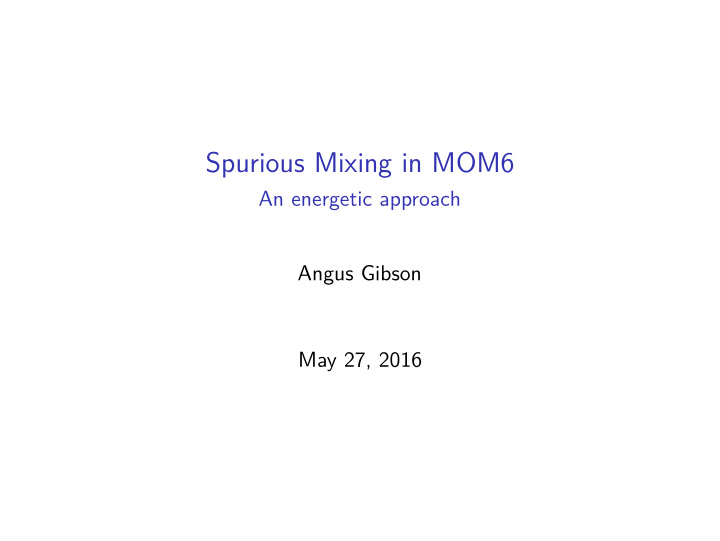



Spurious Mixing in MOM6 An energetic approach Angus Gibson May 27, 2016
Overview
Motivation ◮ Understand the numerical accuracy of different: ◮ remapping schemes ◮ advection schemes ◮ vertical coordinates ◮ Evaluate MOM6?
Reference (background) potential energy ◮ The lowest potential energy state of a fluid ◮ Adiabatically resort to a stratified state ◮ Should be constant in an unforced model with closed boundaries ◮ Increased by mixing; centre of mass is raised � RPE = g z ρ ∗ ( z ) d V Ω ◮ Gives no localised information
Looking at a timestep ◮ MOM6 is a generalised vertical coordinate model (ALE) ◮ Clear distinction between along- and across-coordinate dynamics ◮ Take differences in RPE from different parts of a timestep to determine their contribution ◮ ∆ RPE adv = RPE post adv − RPE pre adv ◮ ∆ RPE ale = RPE post ale − RPE pre ale
Experiments
Overview ◮ We follow experiments from Ilicak et al. (2012) and Petersen et al. (2015): ◮ Lock exchange (dam break) ◮ Overflow (downslope flow) ◮ Internal gravity waves ◮ Baroclinic eddies ◮ Spurious mixing is investigated as a function of the grid Reynolds number: Re ∆ = U ∆ x ν h
Overflow
Low viscosity Figure 1: z ∗ coordinate at Re ∆ = 1 . 5 × 10 5
High viscosity Figure 2: z ∗ coordinate at Re ∆ = 1 . 5
Low viscosity (sigma) Figure 3: Sigma coordinate at Re ∆ = 1 . 5 × 10 5
High viscosity (sigma) Figure 4: Sigma coordinate at Re ∆ = 1 . 5
Figure 5: Model comparison (mean dRPE/dt over entire run)
Baroclinic eddies
Figure 6: Surface snapshot
Figure 7: Solid: MPAS-O, dashed: MOM6
Figure 8: Model comparison
Figure 9: Direction split
Internal waves
Figure 10: Snapshot
Figure 11: Effect of coordinates
Figure 12: An explanation
Discussion ◮ High-order advection schemes? ◮ The effect of CFL number (edge differencing) ◮ Coordinate choices
Figure 13:
Recommend
More recommend